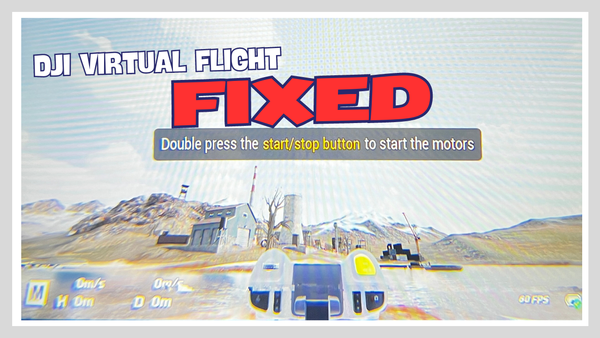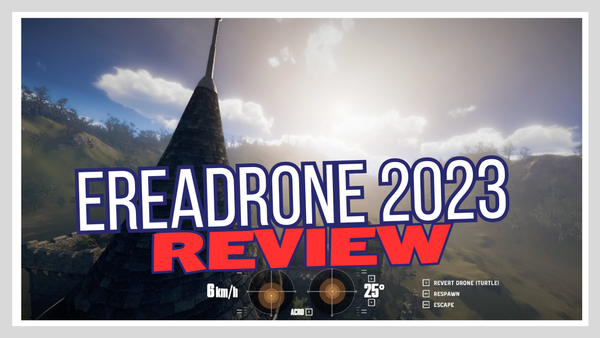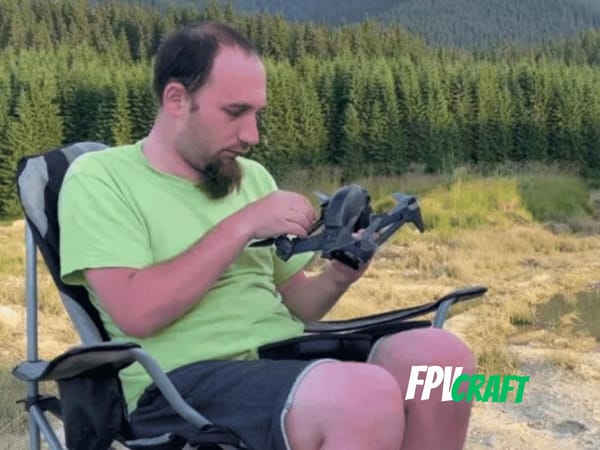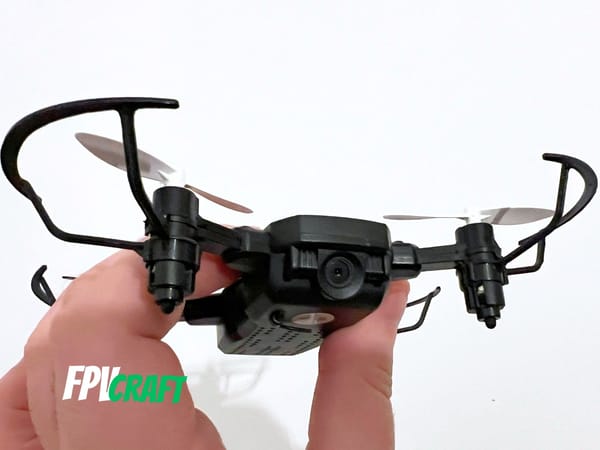Large vs. Gamepad Style Radio Transmitter in FPV
Although it is a preferential choice, when you get into FPV and choose your radio controller, you must pick between a gamepad-style and a large size. Which is better?
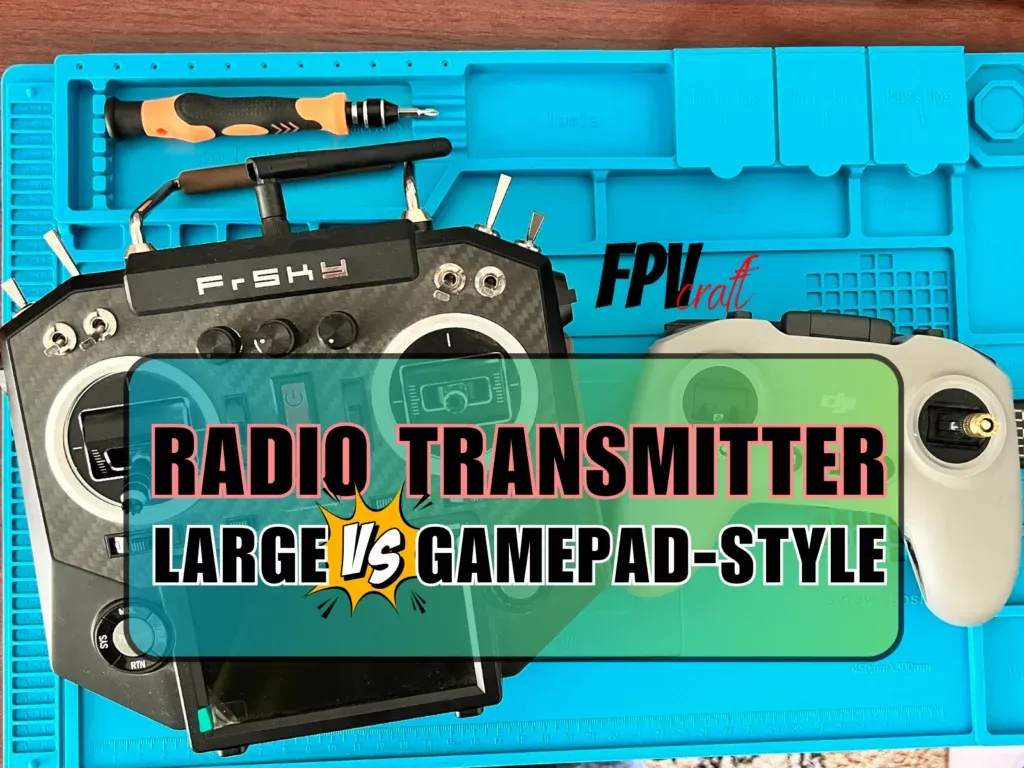
Anyone who wants to get into FPV may encounter this point with the radio controller: Which one to get? There are so many, but mainly, what size?
Should I get a large radio transmitter like the TX16S or a gamepad-style one, like TBS Tango?
Our quick answer is:
The large radio transmitters have many more functions than the gamepad-style ones and can also be used with flying helis and fixed wings on top of FPV drones. In contrast, the smaller radio transmitters are simple, portable, and easier to use, with similar performances to share in transmission power.
Still, this won’t be all. There is much more information to discover, which we’ll cover in this topic.
What is a radio transmitter in FPV, and how they differ
A radio transmitter, RC or TX, is exactly as named: a device receiving physical input commands from the pilot and sending radio signals via a specific frequency based on the protocol to the drone.
The drone will respond accordingly.
The terminology is the same as with any device’s existing remote controller. But in FPV, this radio transmitter may be slightly different.
Often, we find radio transmitters with multiple switches that can be assigned custom functions for the FPV drones, inexistant to regular drones.
Moreover, the radio transmitter has to be linked to a separate receiver soldered to the flight controller, which will have a separate connection to the video transmission module.
With standard drones, the video and radio transmissions are both transmitted and received by the drone’s VTX system.
But that’s not the case in FPV.
Anyway, a secondary point where an FPV remote or radio controller would be different is that the throttle spring tension has to be nonexistent.
While with gamepads and regular drone radio controllers, the throttle joystick always returns to the center, with an FPV RC, this is not the case.
For the YAW, PITCH, and ROLL, these sticks will always return to the middle if let go, but not the throttle.
This applies to both large radio transmitters and gamepad-style ones.
But what we have to know is that there are many transmission protocols, and if we’re looking to buy either a large or gamepad-style radio transmitter, we need to make sure it’s compatible with the receiver installed on your FPV drone.
» READ MORE: 27 FPV Tips to Know Before Flying FPV Drones
What is better: A large radio transmitter or a gamepad-style RC?
Now, ultimately, this will go back as a personal preference based on a few factors and depends on what you’re looking for.
In some scenarios, we don’t have much of a choice because of a characteristic we cannot overlook in one type of controller.
But if all is good and you are just undecided, let’s have a look further down, shall we?
Large Radio transmitters
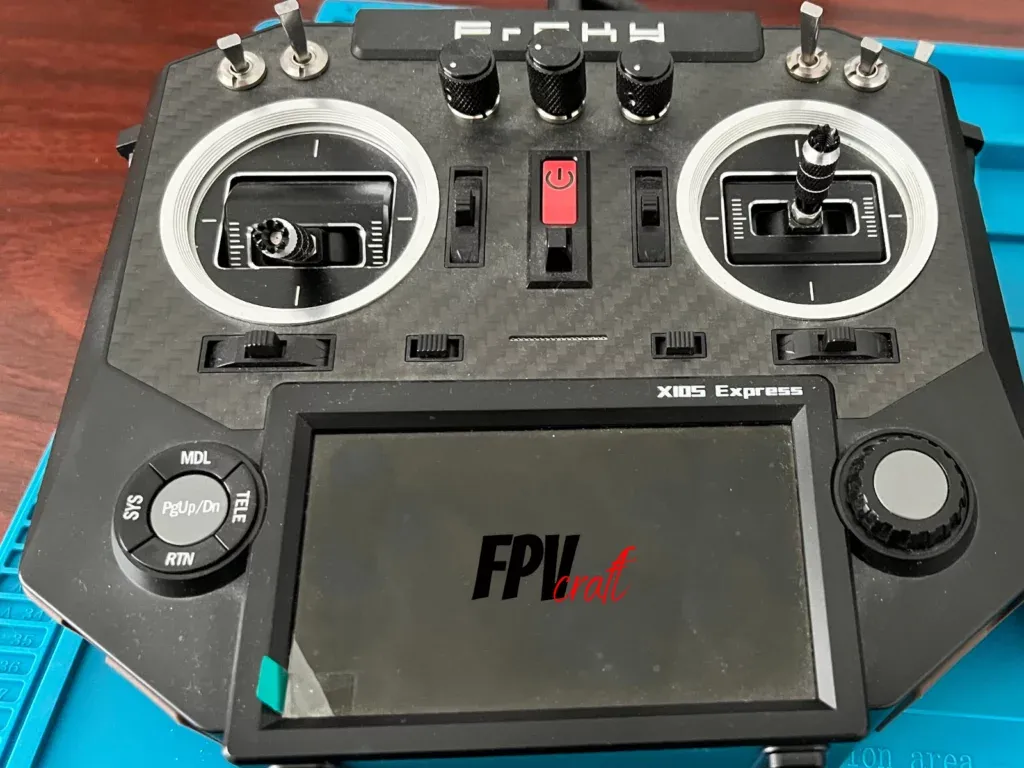
A large radio transmitter looks something like the above image. It could be a FrSky Horus x10, RadioMaster TX16S, Tanaris X9D Plus, or FrSky TANDEM x18, as a very large one.
Or maybe you would like the FLYSKY PL18 EV Paladin?
Just to name a few.
✅ Pros
- It can hold multiple functions on the extra switches and can be assigned to your FPV drone.
- Is the type of radio controller compatible well with RC planes or helis
- It could have a stronger radio signal than a smaller one.
- It would likely be more configurable than a smaller one.
- The module bay could support a wide variety of external modules such as Crossfire or ELRS.
- May have an RF spectrum analyzer
- They are versatile and could be configured to have one such remote controller for all FPV drones, RC planes, and other RC devices.
- The joystick diametral space is much larger and can be used for accurate flight.
- It would be easier to control an FPV drone with such large joystick movements as compared to smaller radios.
- It would be ideal if you fly FPV more pinch and not thumbs.
❌ Cons
- They are harder to transport and need to be transported in a specific hard case due to tall switches.
- It takes a lot of space and would not be so ideal for traveling often with it.
- Heavier and may be uncomfortable to hold for a long time. The ergonomics are not the best.
- You can feel the weight pulling down your neck, even attached with a strap. It could be better suited for pilots who sit when flying.
- These controllers are generally more expensive.
Gamepad-style (small) radio transmitters

If you have ever flown even a standard drone such as a DJI Mini, you will know that all these drones use a smaller version of the radio controllers.
But it’s not necessarily what we’re looking for.
Just to name a few, the DJI FPV Remote Controller 2 is one of them.
But this can be used only with DJI FPV and DJI Avata drones; also, it is compatible with a few digital DJI VTX systems, depending on the controller version.
The TBS Tango 2, RadioMaster Controller Zorro, BetaFPV LiteRadio 3, or JumperRC T-Pro are a few other excellent smaller-size radio transmitters that are not much larger than an Xbox or PlayStation gamepad.
If you are used to playing a lot of console games, and you are very comfortable with a gamepad-style controller, then there’s no need to go further, and I would definitely recommend such transmitters.
But still, let’s have a look over the pros and cons, shall we?
✅ Pros
- Easy to transport and store.
- They are lightweight and very comfortable to hold and use, even for a long time.
- Stylish modern look.
- More accessible to charge, usually via USB-C.
- The spring tension of such controllers is softer, making them more comfortable for aggressive freestyle.
❌ Cons
- The radio gimbal may not be as high-quality and is much smaller with less joystick travel space.
- Could be limited in transmission protocols
- May have a hard time adapting to an external module. In fact, many gamepad-style controllers don’t even support external modules.
- Minimal custom function buttons.
- Some switches are replaced with buttons, uncommon across FPV.
» READ MORE: Updating and Downgrading DJI FPV Firmware Explained
Choosing a radio transmitter: Large or gamepad-style?
For first-time FPV pilots, choosing such a controller style could be difficult, and generally, once you get used to it, using other-size remote controllers would be unnatural.
Believe me, I’ve tried both types, and you regress in terms of skill if you keep switching from smaller to larger RC or vice-versa.
Accurate Flights (more joystick movement)

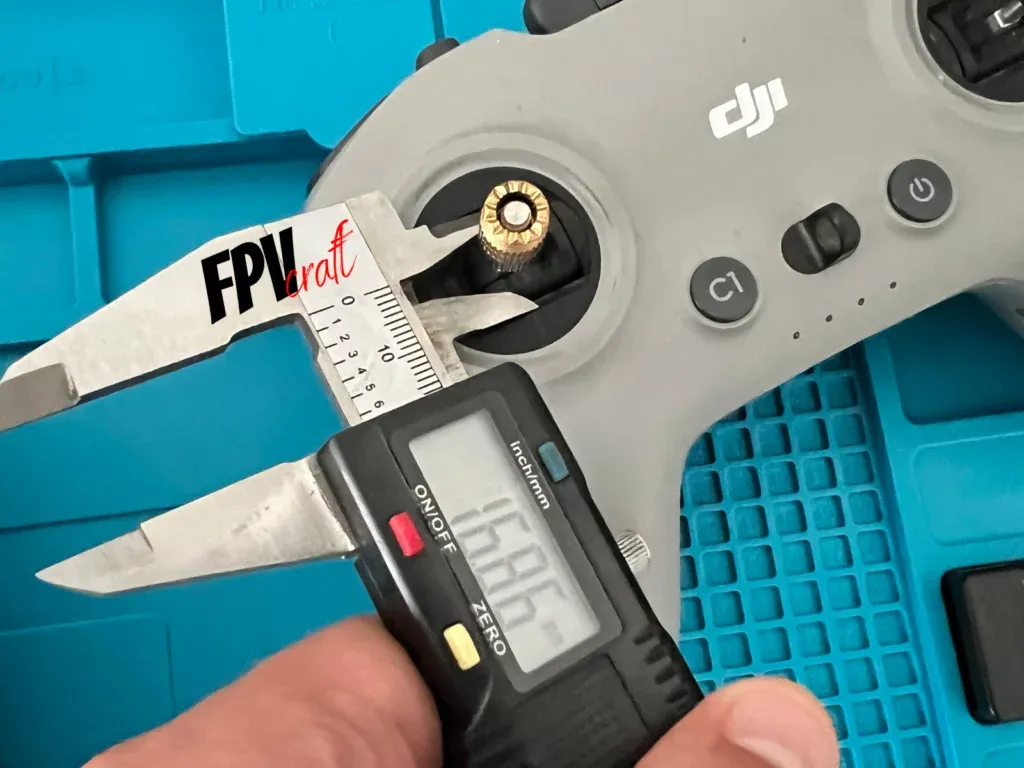
FPV Controllers gimbal size
While the gimbal size of a larger remote controller is much bigger than a smaller one, this allows a lot more joystick movement, usually between a few millimeters to 1-2 centimeters.
Although it doesn’t look much, flying an FPV drone can make a massive difference, especially when we’re looking to fly accurately, such as cinewhoops or even regular FPV drones.
This, altogether with lower rates towards the center stick, can make an FPV drone much more controllable at lower speeds, but not limited to.
For instance, if flying long-range, the more extensive joystick movement would allow the pilot to get the drone closer to the ground meticulously and keep a stable altitude, speed, and direction for superb cinematic videos.
If you are more into freestyle, both types of controllers are still an excellent solution.
However, I often found videos and saw FPV drone pilots having a better time freestyling aggressively with a smaller type of FPV remote controller.
That’s because once you get used to flying at specific rates and to the rotation per second of the drone, you can efficiently perform rolls and other freestyle tricks much better with full-stick input.
Based on Protocol
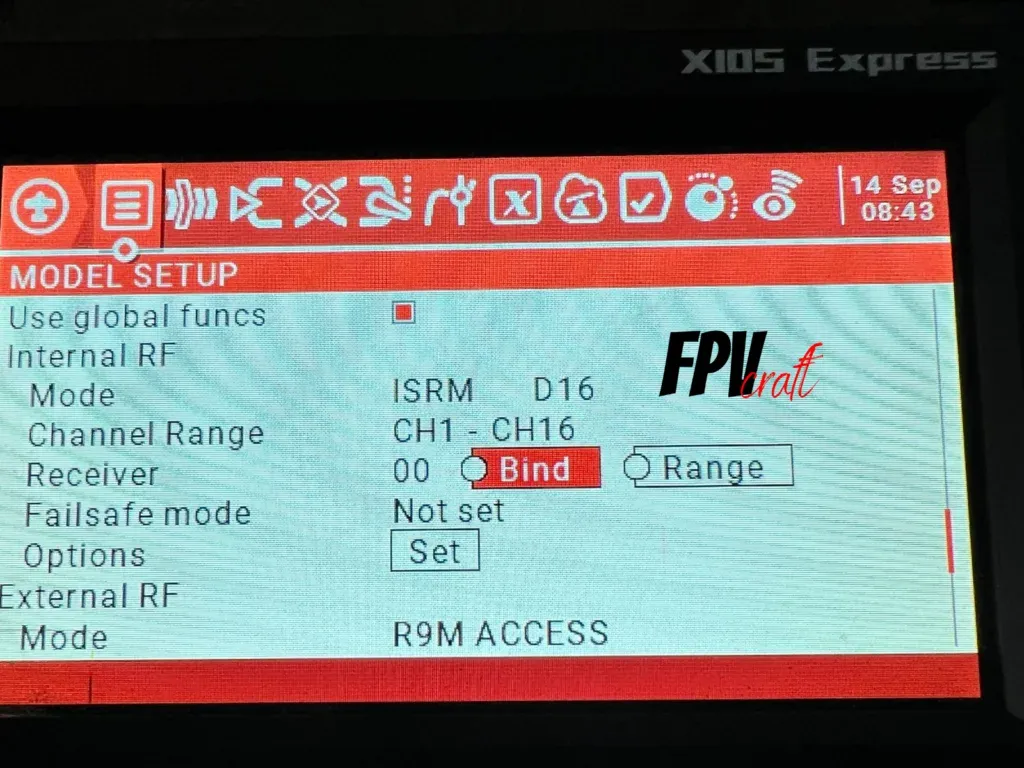
Suppose we’re looking at the internal protocols found on all remote controllers. In that case, it is not uncommon for larger radio controllers to have a wider variety of protocols, transmitting over more channels, a more satisfactory structure of each protocol, and possibly a better signal.
Often, we can find on some large remote controllers the possibility to combine the internal RF with the external RF.
When we relate to what we can find on gamepad-style RC, it’s more limited, with protocol and options.
But frankly, we don’t even need that many. If we stick to the same transmission protocol across our FPV fleet, you never need more than one.
For instance, the TBS Tango 2 is the first type of radio with the TBS Crossfire built-in. If you have several crossfire receivers (or you can get one), then all your drones can fly on the same protocol.
And knowing that crossfire is an excellent choice, all other transmission options found in a controller are obsolete.
External Modules
But if we don’t have the Tango 2 as mentioned above and we want to install a crossfire external module or maybe go ELRS, then we have to look for larger radio transmitters.
Of course, some of the small ones may come with nano bays, allowing some external modules to be installed. But the full compatibility and power relays on larger remote controllers.
Transmission range and power
The antennas found in nearly all large remote controllers are detachable.
This can be interchanged with better ones offering more extended range and penetration on the same transmission power.
It could be a monodirectional, bidirectional, or omnidirectional antenna. I mean, many types can improve the transmission over the base antenna found in a larger controller.
However, with smaller controllers, they are rarely detachable, and you’re stuck with the stock option.
Usually, the larger controllers may also support a wider variety of transmission frequencies.
Training Capability
Some large remote controllers, such as one I have, the FrSky Horus X10S Express, have incorporated a control program for trainers to help others fly an FPV drone.
I am not entirely sure how this functions because I haven’t really tried it, but it’s related to using a master remote controller, which is the Horus X10S, and a slave one, the beginner pilot’s one.
Such programs could not be found on smaller remote controllers.
RF Spectrum analysis
Again, I am taking as an example the Horus X10S Express I have.
With this remote controller on the original FrSky OS, you have a spectrum analysis for radio frequency to find channels with less interferences.
There are larger remote controllers capable of having such features. But if we relate to gamepad-style radio transmitters, this is extremely limited, if not, non-existent.
Other Features
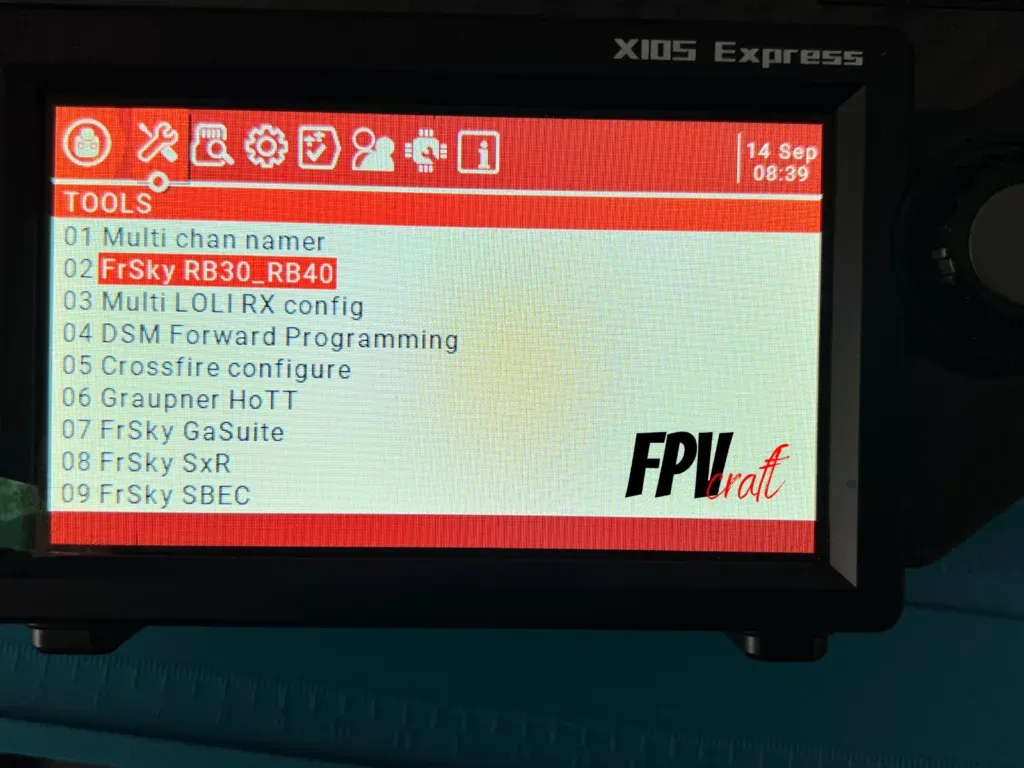
The size is one of the apparent reasons, and the appearance makes the FPV drone pilots decide.
Although it is mostly a preferential choice, other features can influence a pilot to decide between a large radio transmitter and a gamepad-style one.
- Battery Life: Commonly found custom Lipo batteries in larger controllers tend to keep the radio working longer than a gamepad-size RC. But not always; for instance, the notorious DJI FPV Remote Controller 2 can function for up to 8 hours.
- Ergonomic one-hand control: Did you know that some FPV drone pilots may have hand-related issues that can negatively influence the use of a remote controller with both hands, and they feel comfortable adapting to control the sticks with two fingers from the same hand? You can do this only with small radio transmitters due to less distance between gimbals.
- Simplicity and ease of use: We shouldn’t be surprised that many gamepad-style remote controllers are simple and easy to use; it could take just a few seconds to bind to a drone and don’t get the headache of using advanced features from OpenTX or similar RC OS.
- Trim stick center: If you feel your drone is slightly drifting due to an uncalibrated remote controller, often the large ones can be easily calibrated within the operating system or have additional buttons to each axis in order to compensate for the drift. Oftentimes, small controllers lack this.
- To use with fixed-wing or helis: Usually, fixed-wing remote controllers should have a throttle ratchet in order to set the RC plane to navigate at a specific speed and altitude. These are usually part of large radio transmitters, like additional rotative buttons to help with flaps of some RC planes. This could be a solid reason to choose a large radio controller if you also fly fixed wings.
- The use of simulators: Both types of remote controllers can be fully compatible with FPV simulators. This is just a matter of personal choice which one to use to train in FPV.

